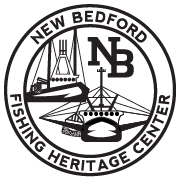Read online: For a great kid-friendly day trip, head to New Bedford The Boston Herald…
SMAST & New Bedford Fishing Heritage Center partner to educate local students
Read the article online here.
SMAST News
Adrienne Wartts (September 30, 2021)
SMAST students volunteer their time to engage 4th-graders in marine science activities related to fisheries oceanography and climate science during the “Something Fishy Camp.”
/filters:quality(80)/prod01/production-cdn-pxl/media/unused-media/kid-at-aquarium_courtesy-pixabay-1-850X566.jpg)
Photo courtesy of Pixabay.
“It is exciting to see the passion of the next generation of potential leaders in the marine science world. It is important to foster relationships within the community and to serve as an example of the potential pathways into fisheries and marine science.”
Mitchelle Chinonyerem Agonsi and Andie Painten, graduate students at UMass Dartmouth’s School for Marine Science & Technology (SMAST), recently volunteered their time to engage with 4th-grade students during the “Something Fishy Camp” organized by the New Bedford Fishing Heritage Center. The goal of the partnership is to engage the New Bedford community in the research that takes place at SMAST and to teach youth about the exciting world of fisheries in their hometown.
“My role was to talk with the students about how I started studying marine science and what it is like to be a graduate student,” says Andie Painten, who is focusing her research on black sea bass and their relationship with offshore wind farms. During the camp, the students were introduced to lab equipment used at SMAST, including cameras, lights, a fish measuring board, and tagged scallop shells, which provided them with hands-on experience as if they were out in the field performing a survey.
Mitchelle, who is pursuing her degree in Marine Science and Technology (Physical Oceanography), worked with additional volunteers to increase awareness of the ongoing research in SMAST. “We introduced what we do which varies from the study of scallops, lobsters, and starfishes to the use of marine instrumentation, such as the ocean gliders. The students were out on a boat trip prior to our team being there, so they were very eager to learn more.”
“Because I work with ocean gliders, I introduced them to the basis of ocean gliders, and the students were very fascinated about it with very interesting questions,” says Mitchelle. “The ocean glider is an automated underwater vehicle that typically measures the ocean’s physical and biological properties such as temperature and chlorophyll-a fluorescence by moving horizontally as it records in a saw-tooth trajectory at about 1km per hour (or 25cm per second), through a programmed depth range. It then surfaces every 2-3 hours to report its location and transmit recorded high-resolution data to the satellites,” she explains. “The oceanographer can then retrieve the data in real-time for further analysis.”
The students also learned about fish tagging: how fishes are monitored closely by marking them for a variety of scientific purposes such as monitoring fish distribution, behavioral patterns, migration techniques, and circulation patterns. “We then taught the students how to take records while at sea. They were excited to practice using the fish measurement instrument and taking down records on waterproof paper,” says Mitchelle.
Andie says volunteering at the Something Fishy Camp was a valuable experience and a good reminder of how in a community like New Bedford, fisheries science and management impacts the community as a whole, and it is important to stay involved. “The campers even taught me a few facts about their favorite fish,” she says. “It is exciting to see the passion of the next generation of potential leaders in the marine science world. It is important to foster relationships within the community and to serve as an example of the potential pathways into fisheries and marine science, especially as a female in an often male-dominated field. That it is feasible, and to show the campers that you can follow your passion and be successful.”
Mitchelle notes one thing that gives her a sense of purpose is lending a helping hand by volunteering. “I am always excited to let people know about what I study especially because it’s not a very popular field of study whereas the more you teach, the more it sticks. I envisioned that it will be a great opportunity to impact positively and encourage the young students to take up careers in marine science.”
She adds, “Science needs to be communicated to everyone both young and old, professional or non-professional, science-oriented or not. Science helps us understand our world and how it affects us and so we need to communicate our science. Participating in the Something Fishy Camp was indeed a pleasurable experience for me. It not only provided an avenue to communicate my science but it gave an assurance that somewhere in the world lies a place for everyone to give back a wholesome contribution even in the little acts of volunteering.”





